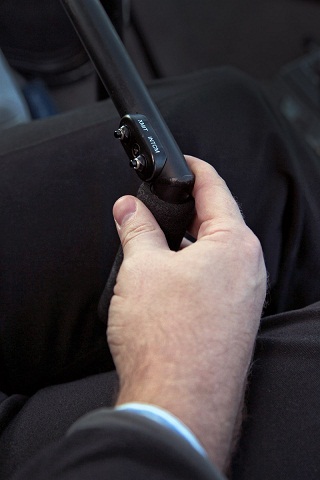 Much of what a fixed-wing pilot learns to do in helicopter training can be whittled down to two things—hovering and autorotations. Both are great fun, but hovering is a more unique experience, and frankly, it’s a bit harder.
Much of what a fixed-wing pilot learns to do in helicopter training can be whittled down to two things—hovering and autorotations. Both are great fun, but hovering is a more unique experience, and frankly, it’s a bit harder.
Hovering is exactly what it sounds like. The pilot tries to keep the helicopter in one spot. A standard hover is done roughly five feet above the ground, although there are lots of variations. Hovering might be aviation’s most unique maneuver, in that the simple description and basic steps involved are at complete odds with the high degree of difficulty.
Learning how to hover is at once incredibly frustrating and magical. When you get it right, the feeling of being suspended just a few feet off the ground completely motionless is epic. The problem is that when you first start those moments are fleeting.
The common expression is that hovering is like trying to stand on a beach ball. But to me that misses the mark. I think quick jiggly motions and immediate pain on a beach ball. It’s more accurate to describe learning to hover like walking a balance beam. Even a beginner gets two steps, and those two steps feel wonderful. But then your foot steps on the edge and the next five steps are progressively more off-balance as you flail in a futile attempt to avoid falling off.
It’s the same feeling in the helicopter. The instructor keeps it over a spot as if the thing is welded to a pole. Then he hands it over and for two seconds, life is like a dream. But then something happens. And this is the frustrating part—you have no idea what changes. But suddenly you’re on a path to certain death and nothing can be done to change it. Just like on the balance beam, you think for a second you can save it but then it just keeps getting worse.
It’s clear that fixed-wing pilots, and maybe all students, tend to overcontrol the helicopter. My instructor Otto is always saying, “Everything happens slowly in a helicopter. Gentle, gentle.” As I start to dial in the hover I can see what he means. Starting out I grabbed the cyclic (think yoke or stick) the same way I grab the stick of a Piper Cub or a Decathlon. The movements are more subtle than that. Unless you really want to go somewhere or make a deliberate turn, the movements in a helicopter are barely perceptible. As a result, I’ve discovered that resting my arm on my right leg and grabbing the cyclic at the top works the best. It’s sort of like choking up on a bat. By shortening the lever, I’ve gained more control.
That’s not to say I can hover. Far from it. But I’ve at least gotten to the point that I don’t feel like I’m falling off the balance beam. Unless there’s wind. That’s a different story.
Next time: The helicopter flight controls.
Read all the stories in the Rotorcraft Rookie series.
Logbook
Total time: 4.1 hours
Maneuvers: Hovering, hover autorotations, steep approaches, normal approaches, takeoffs and landings



